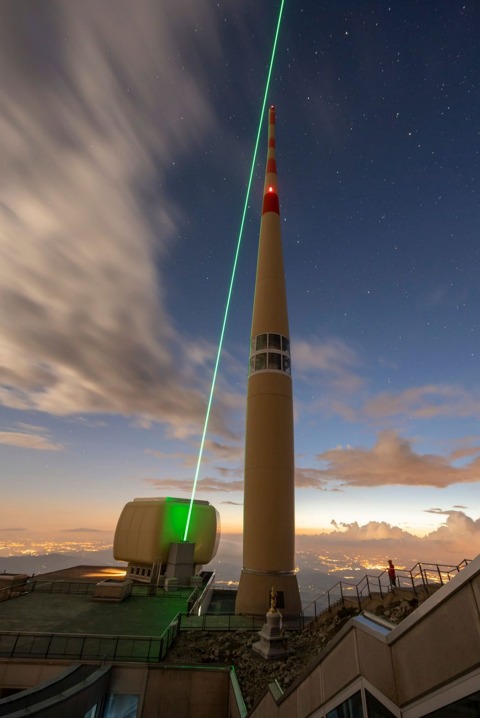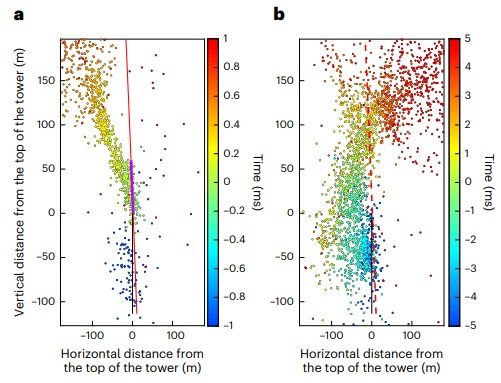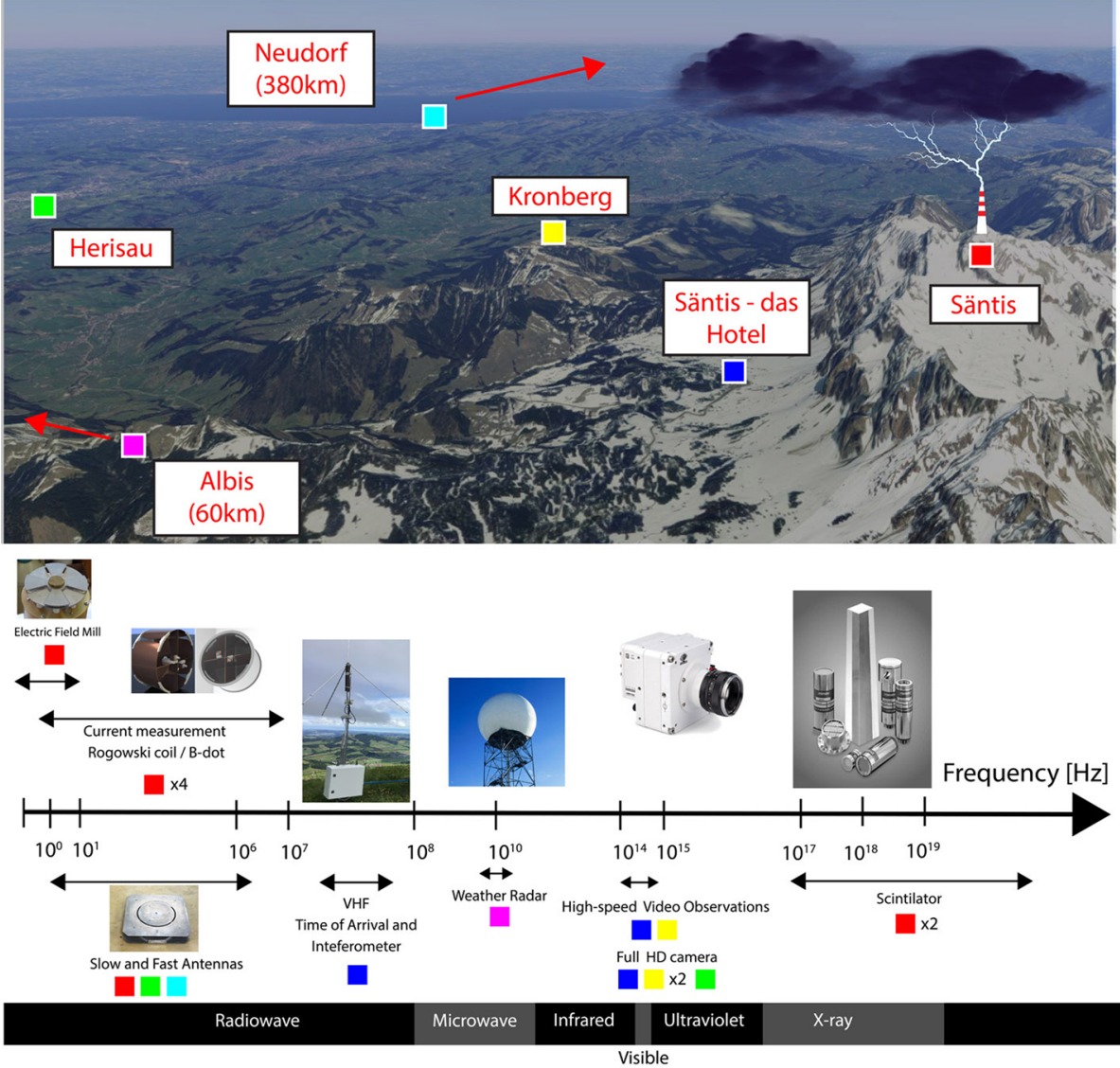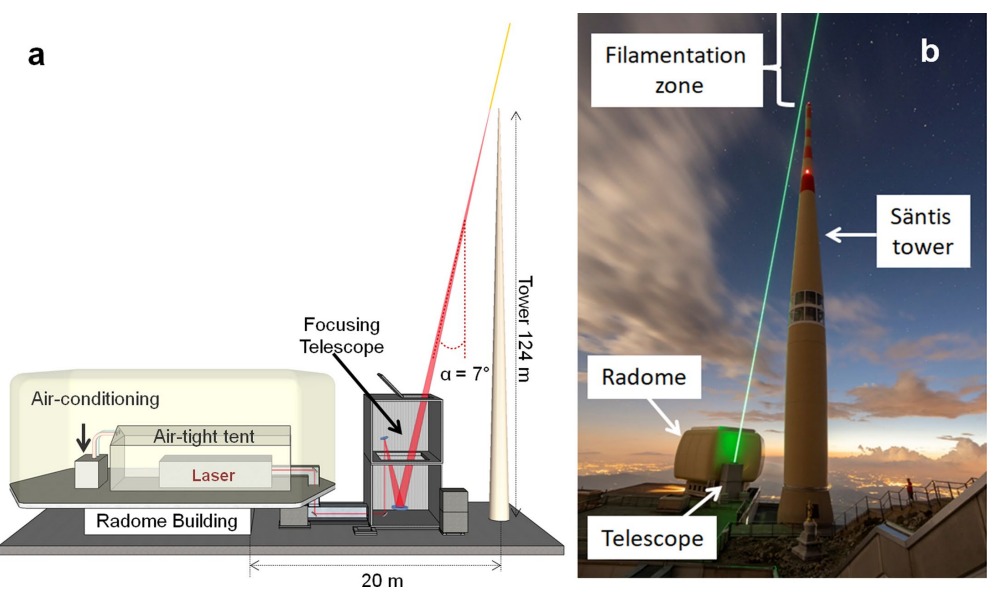Introduction
Thunder and lightning bolts were nightmares of early human civilisation till today, costing over a __ billion dollars in damage worldwide every year. Some of these are combined with other natural disasters like hurricanes and heavy rain to make the situation even worse. A single bolt of lightning holds an immense charge of over a billion joules of energy on average, which can run a small town for an entire day.
Such powers are some of the biggest green energy sources we have from nature, yet hard to extract and store. Such research is being done to make this vision come true. But what about until then? It begs the question of how else is this much energy dealt with.

It is simple if a strike hits the earth transferring the entire high voltage of the clouds onto the earthʼs surface, which is a large neutral body and cannot be charged significantly by a lightening bolt, neutralising the cloud. If it doesn’t strike the earth, the lightening branches on the sky, piercing the atmosphere ionising the oxygen and nitrogen gases till it exhaust its energy (in majority of the cases it doesnʼt) or till it reaches a cloud that is oppositely charged. When such clouds are not present the strike may find its way towards a skyscraper or a sufficiently tall conducting material on a building that travels to the ground.
Preventive Measures
There had been multiple attempts to protect the structures from lightning strikes and one of the most famous form of doing it was through the installation of Franklin rod. It is a metal rod mounted on a structure providing a shorter and conductive path to the earth through a wire without damaging the structure. It had been in use for multiple decades proving to be a reliable method of protection against these strikes. Yet, they only provide a conducting low resistance path for the lightning and do not prevent them from damaging other structures that donʼt have a protection system.

As an alternative to the Franklin rod, the Early Streamer Emission ESE lightning arrester are being used. Here instead of providing a less resistive channel, an opposite-charged leader is induced to trap a lightning into a desired channel.
Such a method is also used through the Rocket and Wire technique, where a rocket is fired from the ground with a conductive wire attached, inducing a lightning strike completely down to the ground in a straight path.

Although these methods are more ranged than the Franklin rod, they canʼt be used for emergency purposes but are best to avoid a heavy lightning strike expected during a storm.
But even so, The range to completely redirect a storm cannot be done simply by rocket and wire nor through the ESE. This demands a high-range lightning redirecter.
This is achieved by the use of virtual lightning rods, formed by the ionised channel of a high-energy laser beam.
Lightning Redirectors
Lightning strikes reach the oppositely charged cloud or the ground through the least resistive path, branching in the sky till it finds one. But similar to the Franklin rod and rocket and wire technique, such a least path can be provided. If the range of less resistance offered is increased, a higher region of lightning strikes can be attracted. Such can be provided if the air is ionised. An ionised air provided a lesser density of air and higher conductivity, creating a suction path for the lightning strike.
This path of ionised air can be created if a sufficiently powerful laser beam is directed into the sky. Such a feat was attained in a 124-metre tall telecommunication tower located on top of the Säntis mountain in north-eastern Switzerland.
The experiment was done in this tower since frequent strikes have to be recorded to obtain a good result. This tower is struck by lightning about 100 times a year on average and is equipped with multiple sensors to record the lightning current, electromagnetic fields at various distances, X-rays and radiation sources from the lightning discharges.

Between 21 July and 30 September 2021, the laser was operated during a 6.3 hour thunderstorm activity occurring within 3 km of the tower. The tower was hit by at least 16 lightning flashes, four of which, L1, L2, L3 and L4 - occurred during laser activity. The recorded lightning strikes were upward, caused due to a positive cloud and the strike originating from the tower to the cloud.
However, observations at the Säntis Tower over nine years in the absence of a laser show 84% negative, 11% positive and 5% bipolar flashes. The four recorded laser events were all positive flashes, connecting the top of the tower to a positive charge centre in the cloud. This makes it clear that the laser was inducing positive flashes more than negative and bipolar ones.
The lightning strike L2 observed on the 24th of July was recorded in a clear sky captured using high-speed cameras. This Strike followed the path of a laser from 50 metres from the tower. However, the discharge did not completely appear straight like that of the rocket and wire technique, where a clear conducting material is provided. On the contrary here, while dealing with high voltages and ionised air molecules, the current displacement is much more complex for moving charges.
The Santis mountain was also installed with a very high-frequency interferometer that observes and locates the Lightning flashes in frames of microseconds. This system was used to compare the effectivity of laser beams and Franklinrodsd by comparing L1 flash and N07 flash respectively.

In comparison, the beam-influenced flash was more confined to the tower than the Franklin rod by 45% reducing the risk of damage to other facilities if it were to be installed on other buildings.
How was this executed?
The laser system used in the setup was capable of producing laser pulses with a wavelength of 1030nm and 720mJ of energy per pulse. Each pulse has a duration of 920 fs at a repetition rate of 1kHz. But while setting up the configuration of the laser system, the output energy was reduced to 500mJ with a pulse duration of 7ps. This was done to prevent any damage to the optics.
This set-up is established in the Säntis mountain, located in north-eastern Switzerland at an altitude of 2,502 metres. On the summit of which stands a 124 m-tall telecommunication tower. The laser system is installed in the radome building, cased in an air-tight, air-conditioned and thermally isolated tent, with an exit for the laser output directed downwards by a conduit through the radome wall to the terrace.

The laser is reflected by a 4-inch folding mirror into a cope of 7.14 magnification ratio. The leakage and perturbation till the telescope is reduced by the use of isolated aluminium housing. The telescope was composed of an additional folding mirror, a secondary 100 mm spherical mirror and a 430-mm diameter off-axis aspheric (elliptic) primary mirror. The beam output, which had a diameter of 250 mm, was sent toward the tower tip with a vertical angle of 7°. Translation stages on the secondary mirror allowed us to focus the beam near the tower tip in order to set the onset of the filamentation process in the desired area in which upward lightning is initiated. The focal length of the telescope was set to 150 m to produce a dense filamentation area of 30 - 50 m above the tower. Filamentation is an important part the this process of the ionisation of atmospheric gases.

During this operation time, the airspace was closed by the traffic authority.
On 24 July, 2021 the L2 lightning strike was observed with the two high-speed
cameras: one operating at 24,000 fps, installed on the Kronberg mountain; and the
second operating at 10,000 fps, installed at Säntis Das Hotel Schwaegalp).
Note that high-speed camera records of upward positive flashes are very rare and
there are only a few reported in the literature!
The velocity estimated from the interferometer data (between
1* 10^5
and
610^5 m/s
) is consistent with estimates deduced from the camera in Kronberg,
which yields a velocity decaying from 410^5 m/s
when leaving the tower tip to 910^4 m/s
at the first branching 120 m above it, with an average velocity of 210^5 m/s
over this interval.
Unfortunately, no fast camera image was available under comparable conditions (upward positive flash) without the laser during the campaign. The filamentation of the laser exerts an electric field in the air. When the electric field in the air exceeds the breakdown electric field, the free electrons in the air start ionizing other atoms and molecules, giving rise to what is commonly known as an electron avalanche.
A growing avalanche will occur mulate space charge large enough to an create electric field higher than the background field, causing a self-propagating electrical discharge known as a streamer. Streamers can propagate in background electric fields lower than the breakdown values. Streamers are cold discharges. During the initiation of a discharge, many streamers branch frthe om same stem, causing the current to increase the temperature of the stem till thermal ionization sets in, increasing the electron density in the stem.
This increasing density reaches a critical density where a rapid transfer of energy transfer to the neutral atoms takes place in the atmosphere, raising the conductivity and temperature of nearby gases to thousands of degrees high. This conducting channel is the leader, which polarises in the background electric field at its tip. The tip creates an electron avalanche creating another leader channel, connecting with the downward leader causing a lightning strike that finally tracks to the Franklin Rod neutralizing its charge.
Conclusion
Laser-Induced Lighting Technology was a huge success when the lightning strikes were redirected and absorbed by the tower during the thunderstorm. This was held more effective than the previously used methods of drawing a lightning strike and neutralising the clouds. The Laser In Lightning Technology was a huge success when the lightning strikes were redirected and absorbed by the tower during the thunderstorm. This was held more effective than the previously used methods of drawing a lightning strike and neutralising the clouds. Indeed, there are several locations where this technology can be applied, creating a safe environment for facilities near places of high thunderstorm frequency. Such as:
- Industrial Sites
- Telecommunication Towers
- Nuclear Power Plants
- Airports
References
Laser beam diverts the path of lightning strikes Physics World
| [ Scientists unveil laser beam to deflect lightning strikes | Financial Times (ft.com)](https://www.ft.com/content/ca60f7b4-82d0-4ffb-ba7f-c6780758b56c) |
| [ Laser-guided lightning | Nature Photonics](https://www.nature.com/articles/s41566-022-01139-z) |
